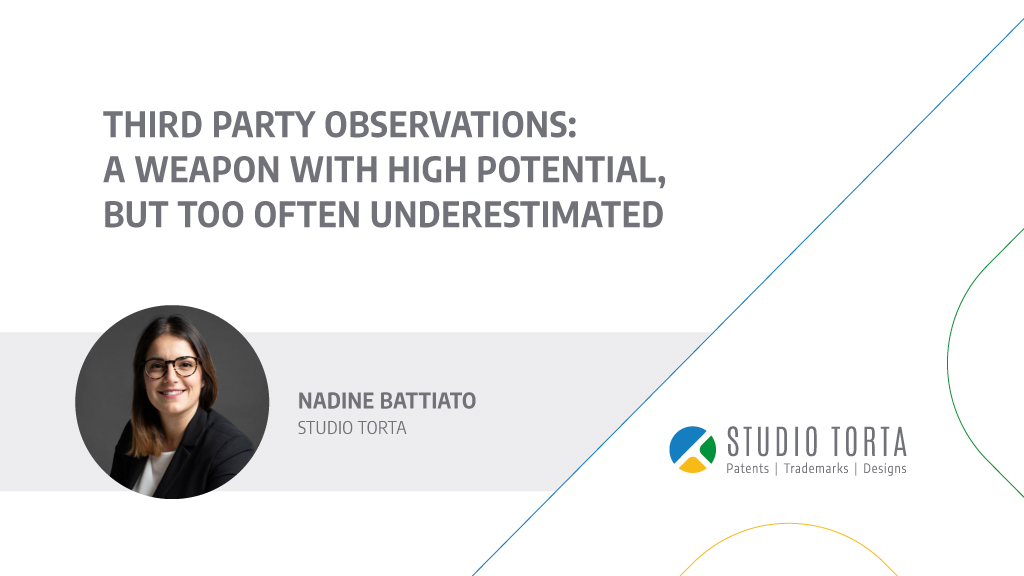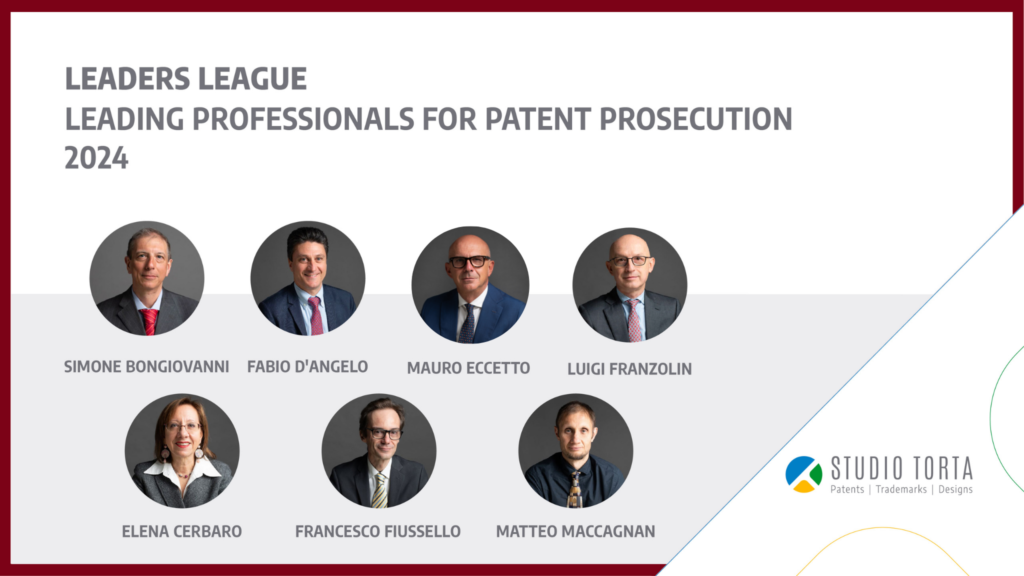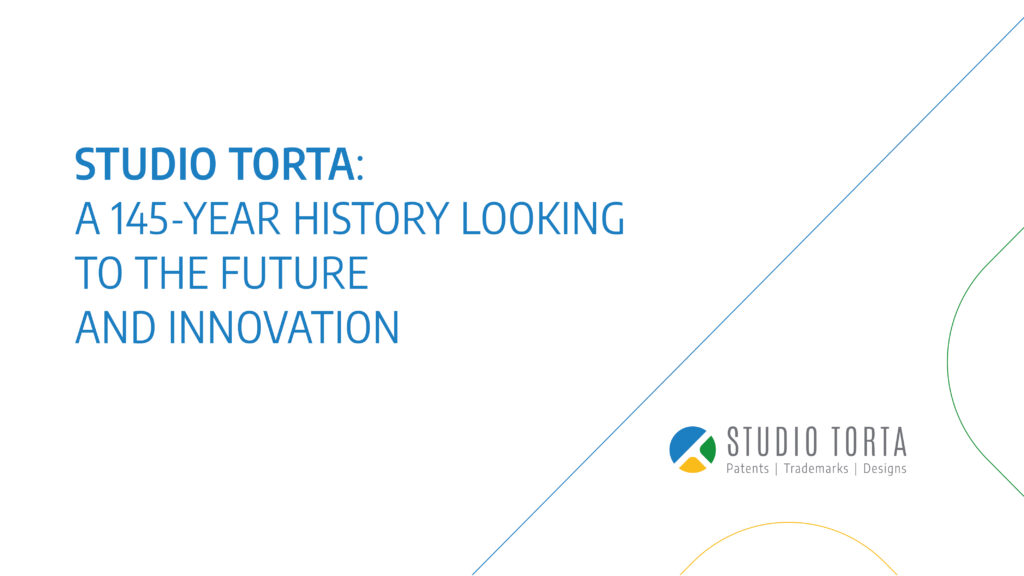Third party Observations: a weapon with high potential, but too often underestimated
What are third party observations?
Observations by third parties are a valid tool provided by various legal systems1, the potential of which is, however, very often underestimated by companies. The European Patent Office provides the following definition of third party observations: “In proceedings before the European Patent Office, following the publication of the European patent application, any third party may, in accordance with the Implementing Regulations, present observations concerning the patentability of the invention to which the application or patent relates. That person shall not be a party to the proceedings”. It is clear that third-party observations are a high-potential means that a competitor has to hinder and oppose the grant of patents/patent applications (i.e. granted or pending) of one of its competitors that may be “dangerous” and/or “inconvenient”. That is, by filing the aforementioned communication, formal and/or substantial objections may be raised such that, if the competent Division is convinced, the patentee (or applicant) will have to amend the claims by restricting the scope of protection of the patent itself. Therefore, the aim is to change the scope of protection by introducing additional features, so that the patent application does not “bother” your business anymore and that, therefore, the patent is directed towards a scope of protection defining a “harmless” solution. But let’s step back. Even before filing an observation by third parties, it would be advisable to activate a surveillance service of the filings made by the main competitors, in order to become aware of their filings at initial stages of the patent application. In particular, surveillance is a service in which patent applications filed by a competitor are monitored, by analysing in detail the scope of protection (i.e. the claims), and carrying out independent searches aimed at acquiring new documentation (mainly patents, scientific documents, books, video publications on the web, etc.) to be reported to the national or regional office with which the “inconvenient” patent application was filed, by filing the aforementioned observation by third parties. Unfortunately, at present, small and medium-sized enterprises and often even large companies do not recognize the potential of the surveillance service, which is very important, sometimes even “indispensable”.
Which are the advantages of filing an observation by third parties?
Firstly, the cost. Everyone knows that a patent can be invalidated by filing an opposition with the European Patent Office or filing a lawsuit for invalidity at a national level. However, these activities are always linked to high expenses that often not all companies intend to support. Third party submissions have the advantage of being much cheaper. Secondly, the timing of filing. To file the observation by third parties, there is no need to wait for the patent to be granted or to respect a certain time limit2. For example, at a European level, it is possible to file observations by third parties at any time after publication. Therefore, it is possible to file observations during the examination phase, the opposition phase and also during the appeal period. Thirdly, the fact of not being part of the procedure. In other words, the party who files observations by third parties does not need to subsequently carry out any other activity. While, as it is well known, in an opposition or nullity procedure the opponent or the defendant are involved in the procedure, which is an adversarial procedure. A further advantage, not least compared to the others listed above, is that you can decide to file observations by third parties anonymously (therefore without letting the patent owner know who filed it) or by indicating the general information (if desired also by a “strawman”). The assessments to be made in choosing the two options are various and different. Surely, those who decide to file an observation by third parties anonymously do not expose themselves to the risk of turning the spotlight on themselves, effectively communicating to the competitor that “this” patent application is inconvenient for them. However, it must be borne in mind that observations by third parties filed anonymously, for example in the post-opposition EPO appeal phase, taking into account the discretion exercised by the Appeal Division tend not to be taken into consideration and are effectively treated as if they had never been filed. On the contrary, by filing observations by third parties with their arguments and indicating the general information, some systems, such as the EPO, provide an acceleration, for example of the examination phase, undertaking to issue an official letter within three months from filing. In addition, third-party observations filed for a country/region are often subsequently called-up also in countries/regions with subsequent examination phases. Therefore, the single filing of an observation by a third party can produce multiple effects over time.
Finally, the success rate. In fact, this weapon, which is so “unknown” and “undervalued” by companies, can actually lead to great successes. Our company, which, among other activities, also deals with the drafting and filing of the aforementioned communications, has analysed the scenarios that arose after the filing of an aforementioned communication. In particular, out of a total of 134 observations by third parties filed on behalf of one of our clients in the last 10 years, it was found that:
– 63%3 of the patent applications against which observations by third parties were filed were subsequently amended, by reducing the scope of protection of the patent applications themselves;
– almost 21%4 of the patent applications against which observations by third parties were filed were abandoned by the owner or rejected by the national/regional office;
– only 10% of the observations by third parties did not produce any effect and the patent procedure continued normally; and
– 6% of the communications did not produce any effect till today
By analysing the numbers indicated above, the true potential of this type of communications is revealed. In fact, 84% of the communications filed led to an amendment, abandonment or refusal. It can be concluded that the best strategy would be the combination of surveillance and filing of observations by third parties, which would therefore be a weapon with excellent potential, albeit unfortunately underestimated.
Notes
1: By way of example, the articles for the single codes are cited: WIPO (Section 802-805), the European Patent Office (Art.115 EPC), the American Patent and Trademark Office (35 USC 122 (e)), the UK Patent and Trademark Office (Section 21) and the German Patent and Trademark Office (§ 43 (3), 2 PatG). As far as Italy is concerned, even if the Industrial Property Code does not provide for patents for inventions, utility models and complementary protection certificates the rules aimed at regulating the observations of third parties, the latter are nevertheless admitted by some years by virtue of general rules relating to administrative proceedings.
2: Except for international patent applications for which it is possible to file a third party observation only within 28 months from the filing date or from the date of the first priority claimed.
3: The indicated percentage takes into account all patent applications that have been amended after at least one observation by third parties has been filed against them, regardless of whether the amendment is directly attributable to the filing of the aforementioned communication.
4: The indicated percentage takes into account all patent applications that have been abandoned or rejected after at least one observation by third parties has been filed against them, regardless of whether the abandonment or rejection is directly attributable to the filing of the aforementioned communication.
Nadine Battiato
© Studio Torta (All rights reserved)




